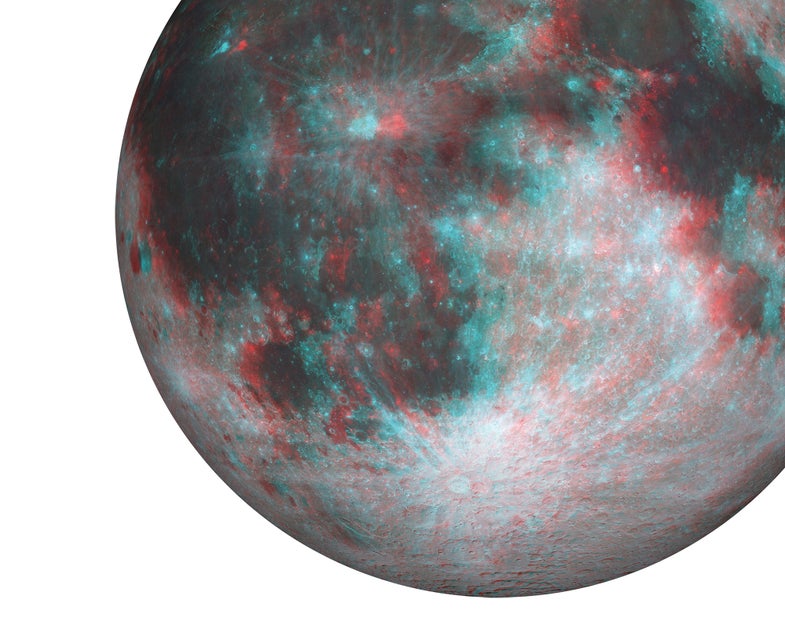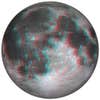Build These DIY 3-D Glasses To Make Photos Of The Moon Pop
Stereoscopic vision in 20 minutes


Red and Blue Moon
When viewed from Earth, the moon appears flat. Stereo vision requires each eye to see an object from slightly different angles, but the intervening 239,000 miles squash the moon’s deep craters and spherical shape into a uniform, luminous pancake. You could build a spaceship to get close enough for a respectable 3-D view—or just trick your brain using the 2.5 inches of space between your pupils as well as photos that reveal the moon’s subtle orbital wobble. (The motion, called libration, creates different lunar perspectives over time). Make this stereoscope for a stellar view of the moon.
Time: 20 minutes
Cost: A few dollars
Click the image to view the stereogram of the lunar eclipse, captured in 2003 and 2008, in full resolution. Image by Thomas Matheson

Materials
**1. **Wire cutters
**2. **Plastic reading glasses (+3.5 diopter is best)
**3. **Sandpaper
**4. **Power drill
**5. **1-inch-long bolt
**6. **Ruler
**7. **Superglue
**8. **Pencil
**9. **Computer
Instructions:
(A) Cut: Using the wire cutters, snip the reading glasses at the bridge. Cut off the earpieces to create stubs about one inch long protruding from each lens. Sand any rough edges until smooth.
(B) Drill: Flip the lenses around so the inside edges are on the outside. Drill a hole through each earpiece stub, and screw the bolt through the holes. Position the centers of the lenses 2.5 inches apart.
(C) Glue: Superglue the pencil to one of the earpiece stubs for a handle. (Note: Gluing a blackened business card to the side opposite the pencil can help improve the stereoscopic effect.)
(D) View: Download and print the moon stereogram [above]. Hold the stereoscope to your eyes, and hover about seven inches above the two moons. When you stop seeing double, a single 3-D moon should appear.

WARNING: Wear proper safety gear, including gloves, a facemask, and protective glasses. Cement is an irritant, hot plastic can scald skin, and utility knives are sharp—be careful!
_This article originally appeared in the November 2013 issue of _Popular Science.